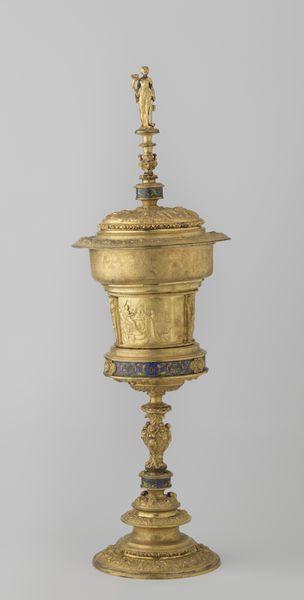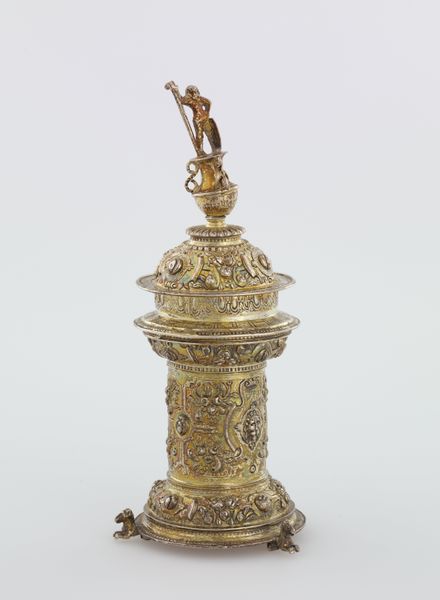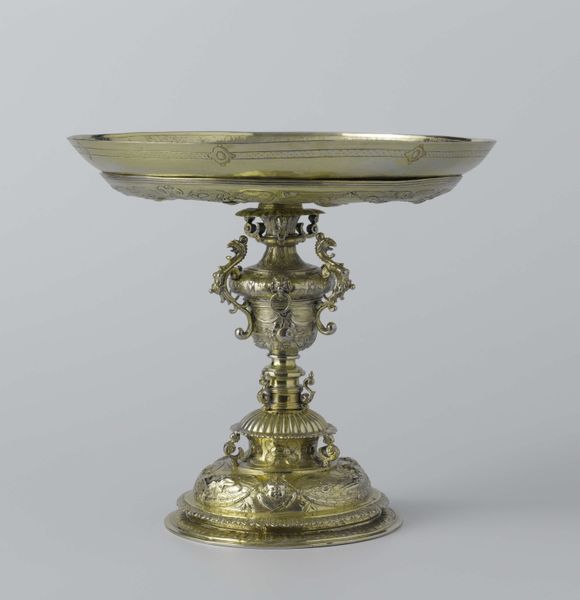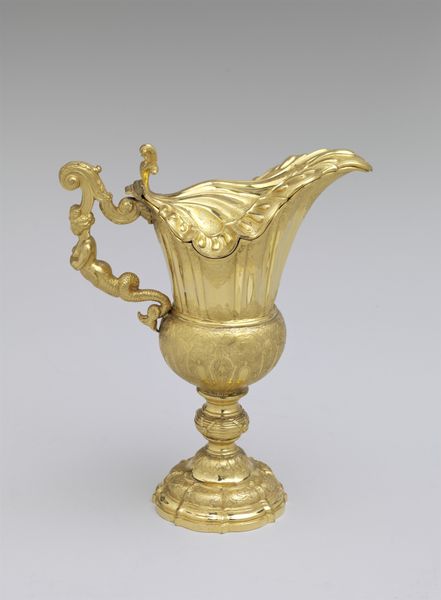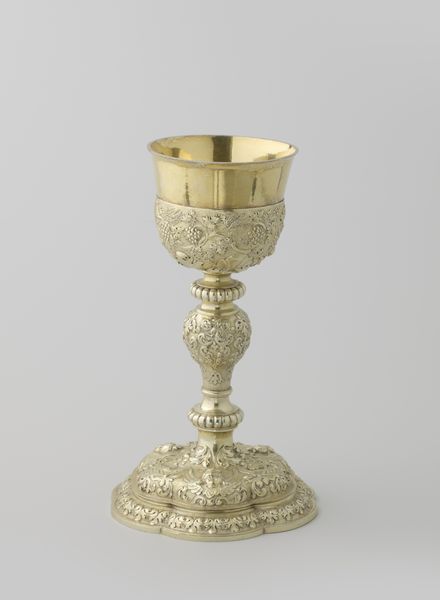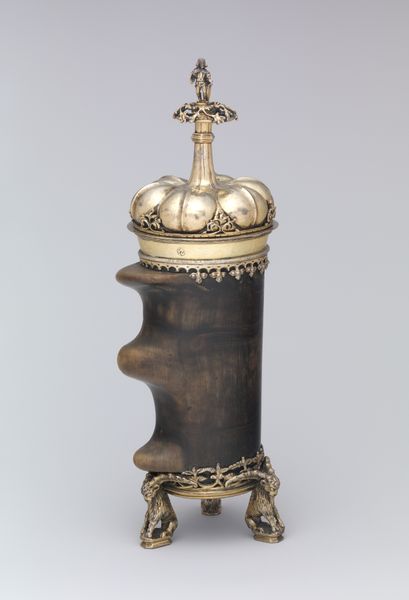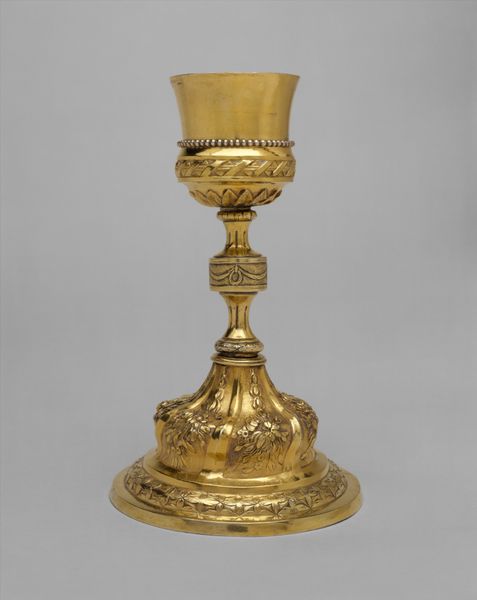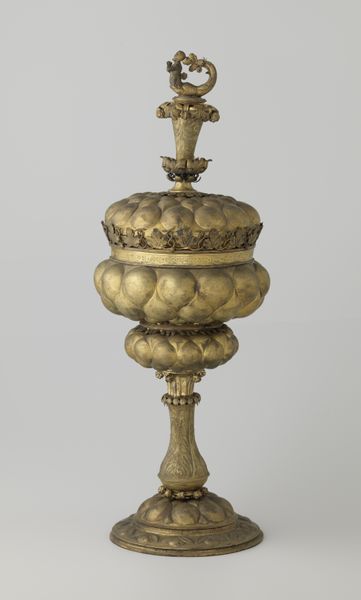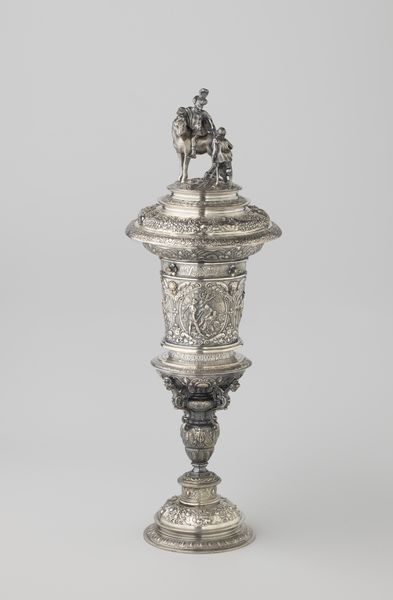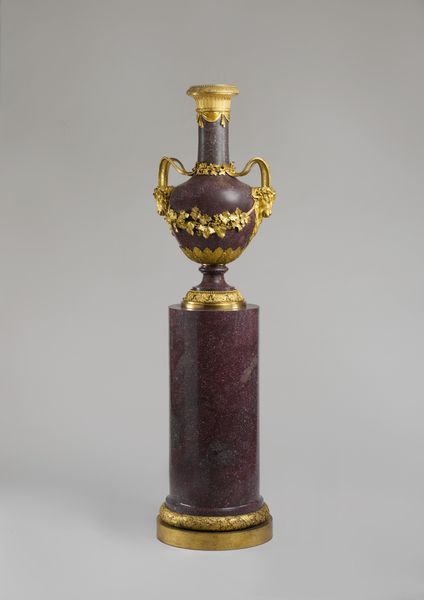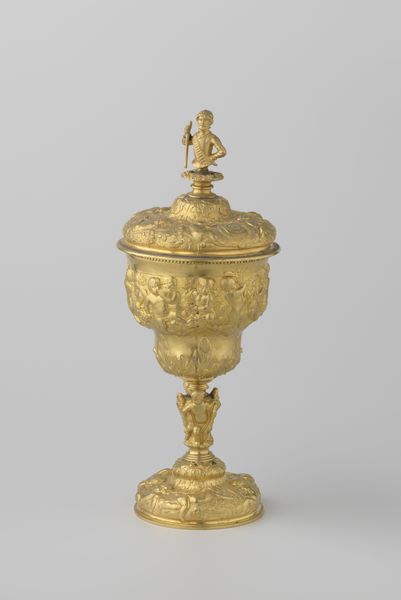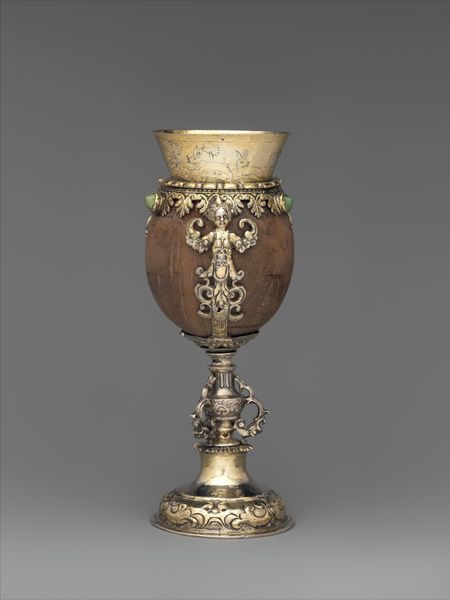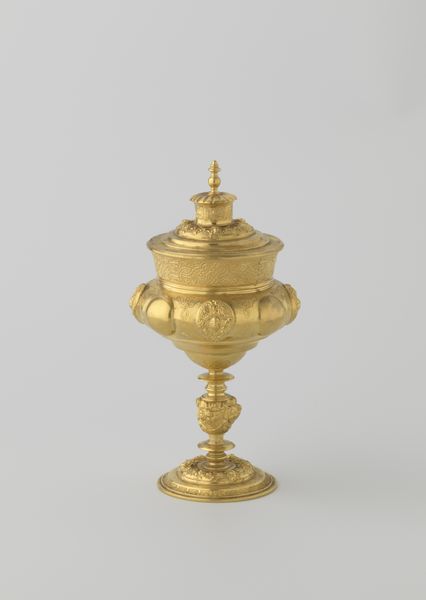
brass, metal, bronze, sculpture, marble
#
portrait
#
brass
#
baroque
#
metal
#
bronze
#
sculpture
#
marble
Dimensions: height 31 cm, height 14 cm
Copyright: Rijks Museum: Open Domain
Curator: Hendrick de Keyser's "Prins Willem van Oranje," dating from around 1620 to 1800 and currently residing at the Rijksmuseum, is a compelling bust. Initially crafted in bronze, brass and marble additions were made over time reflecting shifting material practices. Editor: There's such gravity in his expression! And the way the ruff frames his face – almost like he’s peering out from behind a fortress. Gives a sense of both vulnerability and incredible power. Curator: That duality you sense is quite appropriate, I think. Think about the laborious process: extracting and refining the bronze, the lost-wax casting technique to render form, then consider the social framework. The workshops, the division of labor. This wasn't a solitary endeavor but a coordinated production serving ideological purposes. Editor: You can almost smell the forges and the marble dust. And you are right, looking at that marble plinth he's displayed upon—the brass ornamentation with the repeating leaf motif—there's such meticulous work evident in every layer! Curator: Consider what it meant to produce such an object during that era. Bronze itself signals status, the marble indicates the transformation from Republican leader to a figure approaching Royalty in later periods of Dutch history.. And the artistic skill on display clearly positions this not as mere functional item, but as a cultural object commanding respect and signalling a conscious political construction of memory. Editor: It’s amazing how material choices inform that intended legacy. Seeing him rendered in this way makes you imagine the conversations he would have had, decisions weighed, secrets kept… What does this image hide from the outside world, while presenting a formidable façade? Curator: The transformation of raw materials into this idealized representation also involves cultural shifts of later centuries, where the heroic is transformed to almost operatic heights. Editor: Thinking about it, what I first saw as a kind of austere melancholy feels now a sort of burdened heroism. It shifts with perspective. Curator: Exactly. Considering its making highlights those shifts in context too, doesn’t it? Editor: Absolutely. It makes this more than just a statue of a historical figure, but evidence of a journey across time itself. A great portrait—and the details have brought it fully to life.
Comments
No comments
Be the first to comment and join the conversation on the ultimate creative platform.
